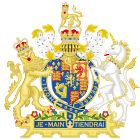|
Treason Act 1695
The Treason Act 1695 (7 & 8 Will. 3. c. 3) is an Act of the Parliament of England which laid down rules of evidence and procedure in high treason trials. It was passed by the English Parliament but was extended to cover Scotland in 1708[2] and Ireland in 1821.[3] Some of it is still in force today. ProvisionsThe Act provided that:
However, the Act did not apply to forgery (some kinds of forgery were classed as high treason by the Treason Act 1351), or to petty treason.[4] HistoryThe Act was passed because previously the law had been extremely harsh, allowing little opportunity for a defendant to defend himself and enabling trumped-up charges of treason to succeed. By the 1680s even the notoriously severe Judge Jeffreys was prepared to admit that it was "hard" that the accused in a treason trial had no right to counsel. However, between 1817 and 1998 the protection of the Act was removed from those accused of treason by assaulting the heir to the throne, or misprision of such treason.[5] Today most of the Act has been repealed, but the three-year time limit still survives (see below), and of course, the rights to be represented and to have a copy of the indictment (now free of charge) still exist in other legislation. However, the "two witnesses" rule no longer exists in the United Kingdom. In 1800 this rule, and all other special rules of evidence in treason cases, were abolished for cases of killing or attempting to kill the Sovereign. The Treason Act 1842 extended this exception still further, to all attempts to maim or wound the Sovereign (non-lethal assaults on the Sovereign were treason until 1998). Finally, in 1945, the special status of treason was removed for all kinds of treason, and ever since then the evidence required, and the procedure followed, in treason proceedings have been the same as in murder trials.[6] Repeals Section Five from "And be it further enacted that no Person" to end of that section and the last section were repealed by the Statute Law Revision Act 1867. Sections 2 and 4 were repealed in part by the Statute Law Revision Act 1888. The Treason Act 1945 repealed the whole Act, except for sections 5 and 6. Section 5 was repealed in part by the Statute Law Revision Act 1948. The Act todayThe three-year time limit described above – and the original exception to it – are still on the law books today, and are contained in sections 5 and 6 of the Act. (However grand juries were abolished in England in 1933, and now indictments need no longer be signed.[7]) When in 2000 a British newspaper suggested that James Hewitt be prosecuted under the Treason Act 1351 for an alleged affair with Diana, Princess of Wales,[8] it was pointed out that the mooted evidence fell outside the time limit. See also
References
|
||||||||||||||||||||||
